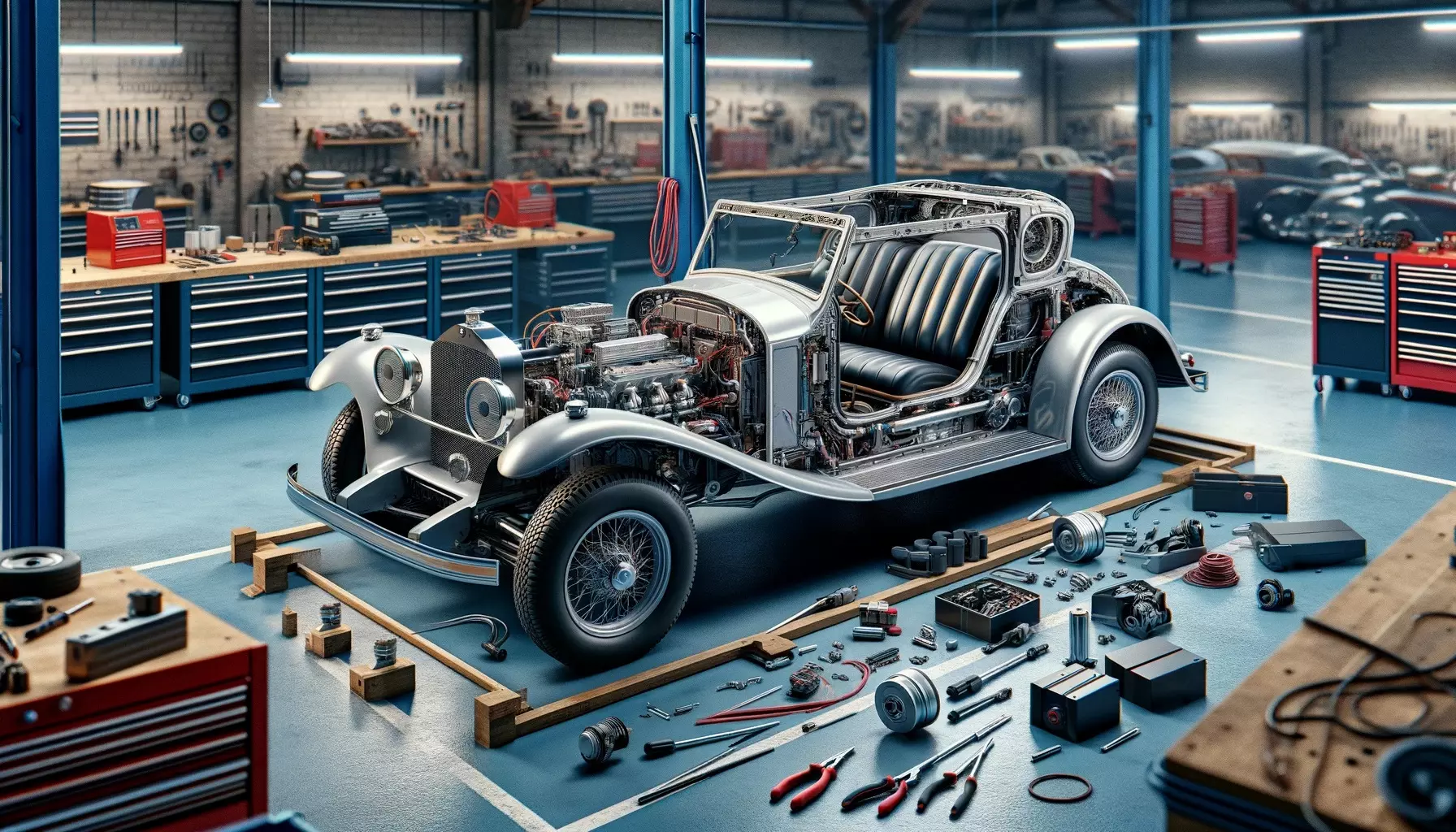How Car Designs Were Influenced by Different Periods
The Art Deco Influence on Car Design (1920s-1930s)
The 1920s and 1930s marked a significant shift in the world of car design, heavily influenced by the Art Deco movement. This period was characterized by economic growth and technological innovation and saw car designs transform from mere functional machines to symbols of style, luxury, and speed.
The Essence of Art Deco in Automobiles
Art Deco, known for its emphasis on modernity and elegance, left an indelible mark on car design. Cars started to exhibit streamlined shapes, sleek lines, and elongated forms, mirroring the architectural and fashion trends of the time.
Iconic Models and Designers
Several car models from this era stand as testaments to the Art Deco influence. The 1934 Chrysler Airflow, for instance, was one of the first cars designed using wind tunnel tests, boasting a revolutionary streamlined shape. The 1935 Auburn Speedster represented the pinnacle of luxury and speed with its elegant, flowing lines.

Technological Advancements and Materials
The use of lightweight metals, new fabrication techniques, and innovative engineering allowed designers to experiment with shapes and forms that were previously impossible.
Cultural Influences and the Automotive Industry
The prosperity of the Roaring Twenties brought about a cultural shift that impacted car design. Automobiles became a canvas for expressing status and sophistication. The influence of cinema, art, and the emerging celebrity culture also fed into the design trends.
Post-War Prosperity and Its Impact on Automotive Aesthetics
This period saw an explosion of bold, futuristic designs that mirrored society's fascination with space exploration and the possibilities of the atomic age.
The Dawn of Futuristic Design Elements
The 1950s and 1960s were defined by cars that featured audacious tail fins, chrome accents, and vibrant colors. These elements were not just design quirks; they symbolized speed, power, and a forward-looking optimism.
Innovations in Safety and Comfort
This era also witnessed significant advancements in safety and comfort. Features like seat belts, power steering, and improved suspension systems became more common, reflecting a growing concern for driver and passenger safety.
Cultural Shifts and the Automobile's Role
The automobile's role in society shifted during this time. Cars were no longer just a mode of transportation; they became an extension of one's personality and status. The designs of the period were heavily influenced by popular culture, especially the burgeoning television and movie industries, which often showcased cars as symbols of success and freedom.
Key Models and Their Influence
Iconic models from this era, such as the Cadillac Eldorado and the Chevrolet Bel Air, exemplified the extravagant design trends of the time. Their bold appearances and innovative features set new standards in automotive design and continue to influence modern car aesthetics.

Introduction to the Muscle Car Era
The late 1960s and 1970s heralded the rise of the muscle car, a symbol of raw power and rebellion. This era marked a departure from the opulent designs of the previous decades, focusing instead on performance and horsepower.
Characteristics of Muscle Cars
Muscle cars were characterized by their powerful engines, aggressive styling, and affordability. They were built for speed and performance, often featuring V8 engines and simplistic, bold designs. This was a time when speed was king, and cars were engineered to deliver thrilling driving experiences.
Cultural and Social Impact
The muscle car era was closely tied to the counterculture movement of the time. These cars represented a break from traditional values, embodying a sense of freedom and non-conformity. They became icons of American culture, featured prominently in films, music, and television.
Key Models and Their Legacy
Iconic muscle cars like the Ford Mustang, Chevrolet Camaro, and Dodge Charger became household names, each with its own loyal following. These cars were not just vehicles; they were statements of identity and lifestyle.
The End of an Era and Its Lasting Influence
The muscle car era gradually faded due to rising fuel prices and environmental concerns. However, its impact on car culture is undeniable. Today, these cars are highly sought after by collectors and continue to inspire modern automotive design and culture.
Stay Tuned
We've come to the end and found out how different periods influenced the designs of retro cars. If you want to know more about their history, interesting facts and tips, stay tuned. There will be even more interesting things coming soon!





